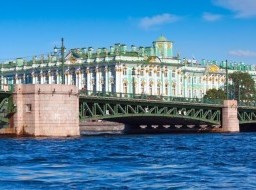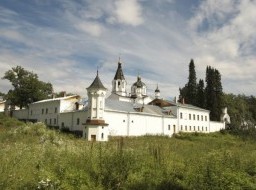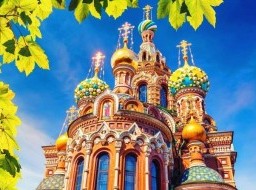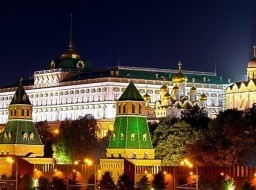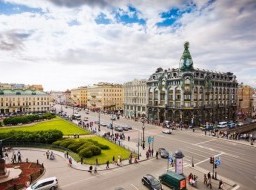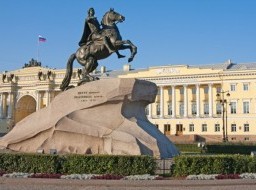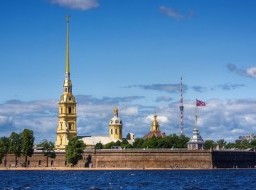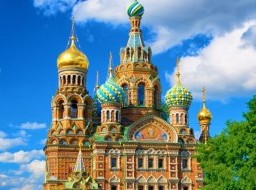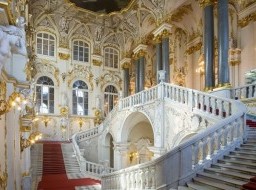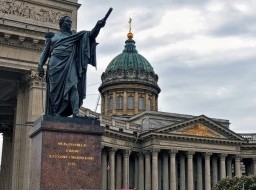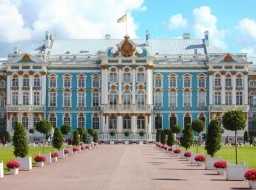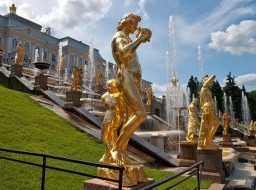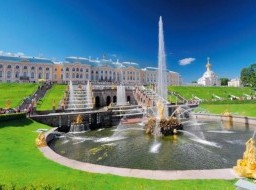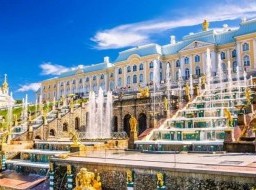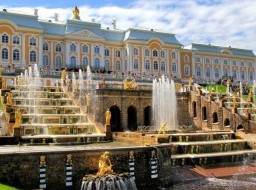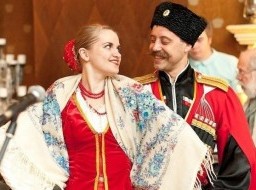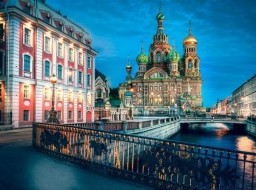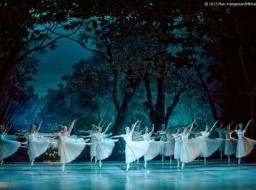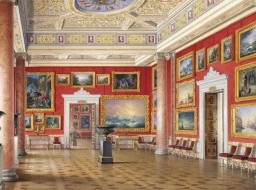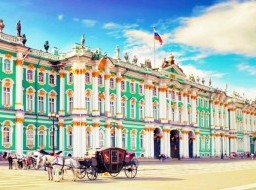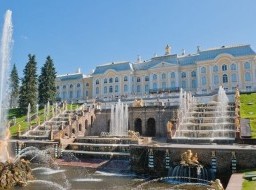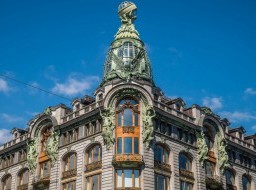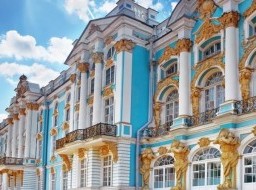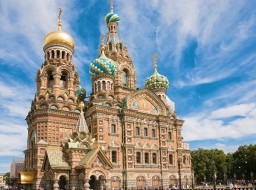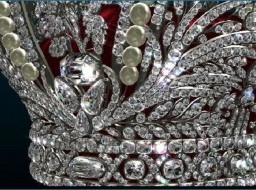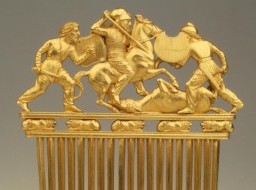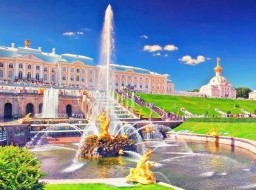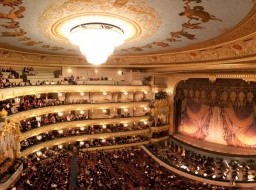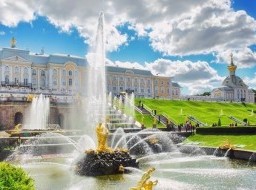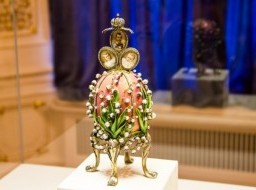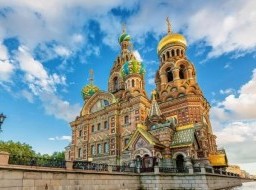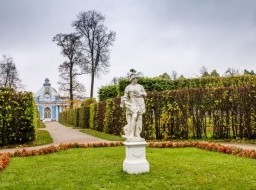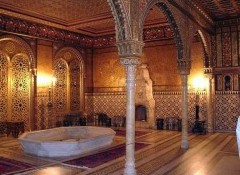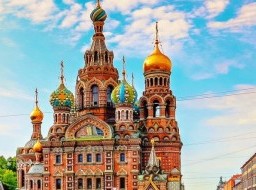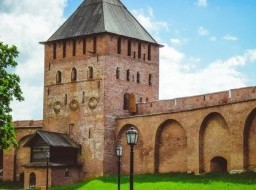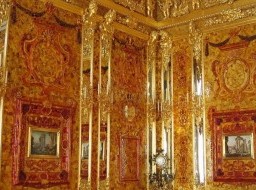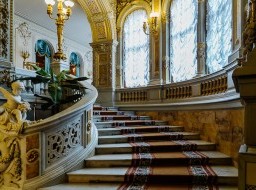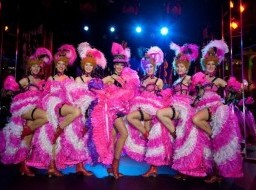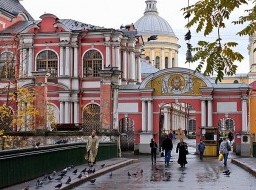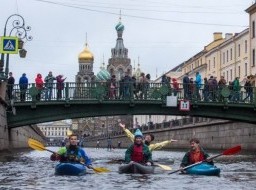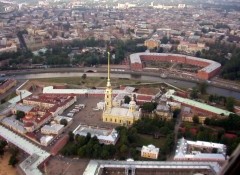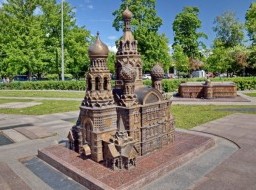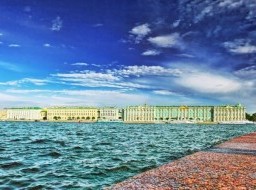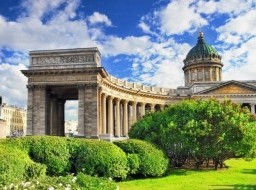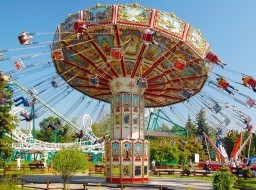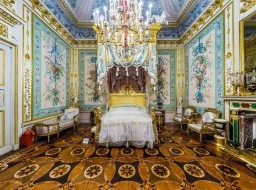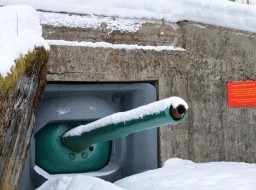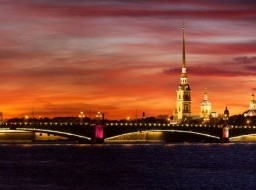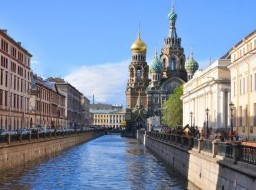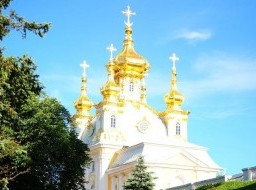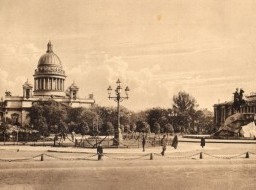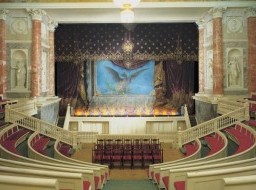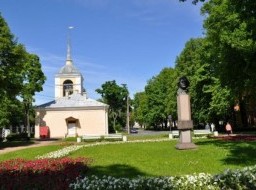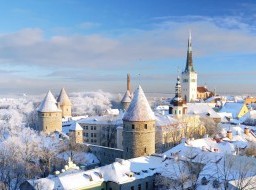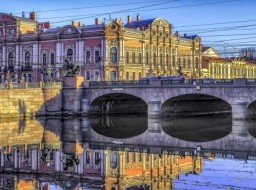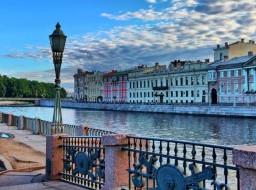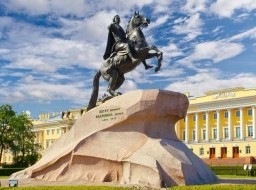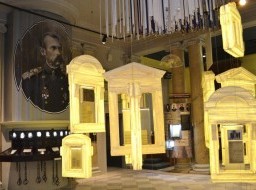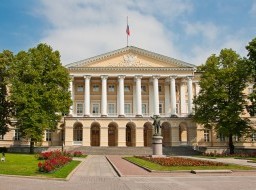Grand Choral Synagogue
The Grand Choral Synagogue of St. Petersburg sometimes called the St. Petersburg Synagogue, is the second largest synagogue in Europe. It was built between 1880 and 1888, and consecrated in 1893. Poet Osip Mandelstam called the Petersburg Synagogue a "lavish, outstandish seductress." The St. Petersburg Synagogue could be built only after a building permit was obtained on September 1, 1869 from Tsar Alexander II, who lessened the restrictions on Jews' residence in St. Petersburg. This became possible after the memorandum to the Royal Name was submitted by the leader of the Jewish Community, Hereditary Honorary Citizen of Russia Evzel Ginzburg, who was one of the major suppliers of the Russian Imperial Army. His son, Horace Evselevich Ginzburg, was Chairman of the St. Petersburg Jewish community from 1869 - 1909, and supervised the construction of the first synagogue in St. Petersburg.
Tsar Alexander II allowed Jews who were retired soldiers, people with academic degrees, 1st guild merchants, specialty craftsmen, and technicians to reside in St. Petersburg, as well as other cities outside the Pale of Settlement. By 1870, there were about ten Jewish houses of worship in St. Petersburg, however, there was no Grand Synagogue to serve the entire Jewish community in the Russian capital. The land plot for the first synagogue was bought in 1879 for 65,000 rubles. The construction of the first synagogue in St. Petersburg was subject to multiple conditions and restrictions. For example, there could be no Christian churches near the synagogue, nor government roads used by the Tsars. Another restriction was the height of the building, which was limited to 47 meters, instead of the 65 meters proposed by the architects. In fact, no building in St. Petersburg could be higher than 23 meters, the height of the Tsar'sWinter Palace, and exemptions were only given for bell towers and domes, because those also served as observation towers for fire watch and other safety purposes. While allowing the synagogue to be 47 meters tall, the Tsar imposed several other requirements. Architecture The group of architects and supervisors for the first synagogue in St. Petersburg chose the Moorish style for its design, modeled in part after Berlin's Oranienburger Straße New Synagogue with its melange of Moorish and Byzantine motifs. In the end, the project boasted an eclectic blend of neo-Byzantine and Moorish revival styles with Arabesque motifs, upon the request of V. V. Stasov, the influential Russian art critic and supervisor of the project. The Great Choral Synagogue was designed by architects I.I. Shaposhnikov, L. Bakhman, and V.A. Shreter, with the participation of V. V. Stasov and N. L. Benois, who was the curator of the project and the confidant of the Tsar and the Russian government. The land for the synagogue was allocated near the Mariinsky Theatre. The construction was carried out under the management of the Construction Committee headed by A.A. Kaufman. The architect and superintendent of construction was A.V. Malov, and his assistants were S.O. Klein and B.I. Girshovich, between 1880 and 1888. First, the Small Synagogue was opened in 1886. The Great Choral Synagogue was consecrated in 1893. |
|

